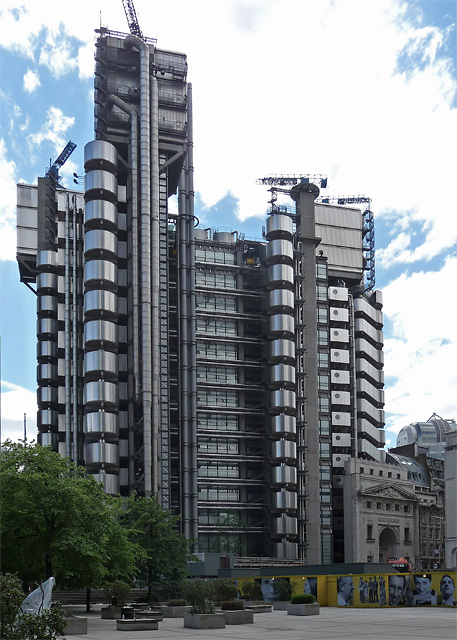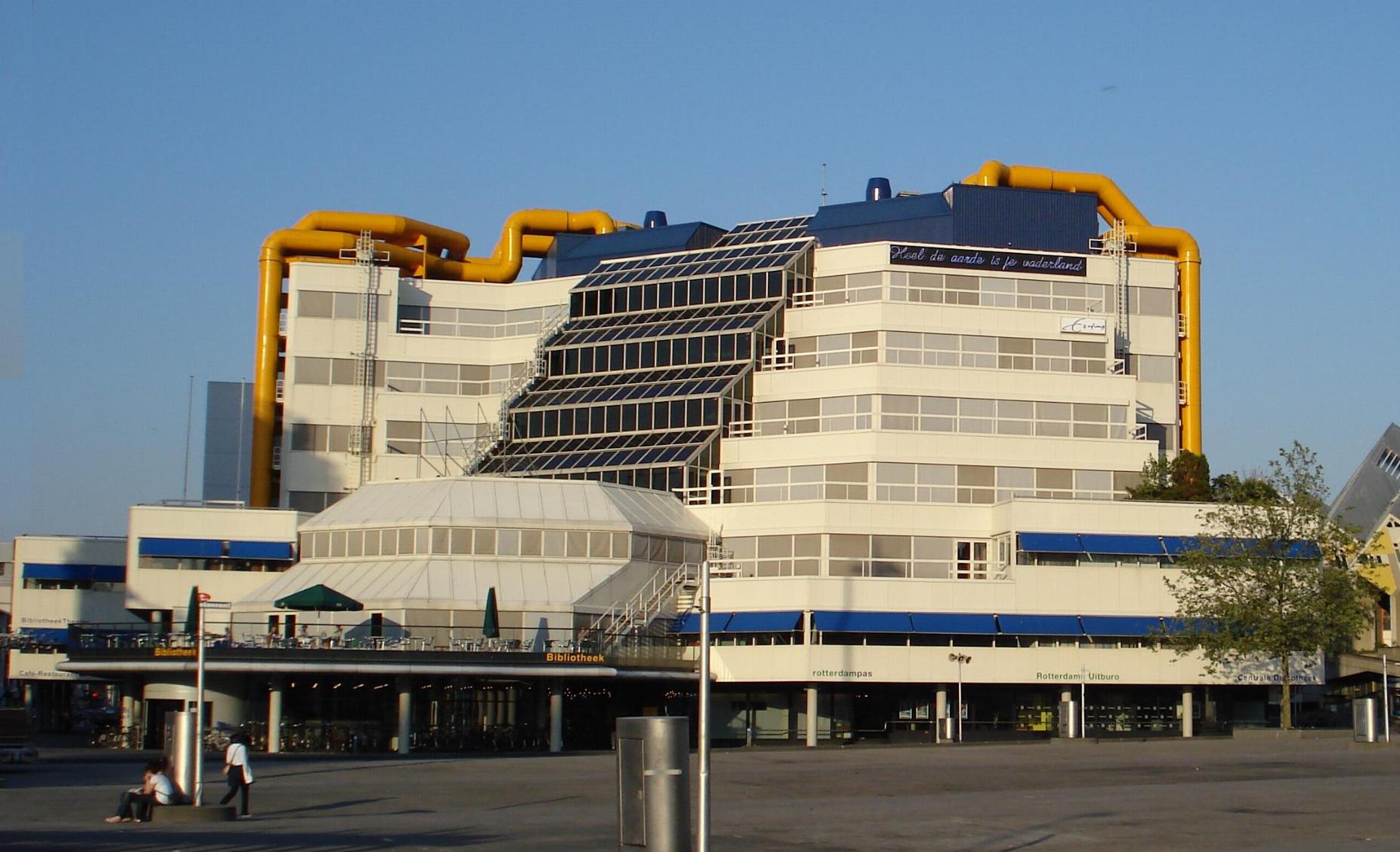Bowellism on:
[Wikipedia]
[Google]
[Amazon]
 Bowellism is a modern
Bowellism is a modern
p. 23, 1.11, 1.12 caption
calling bowellism a "micromovement". Webb coined the term in response to a comment on his design byRichard Rogers
Architects, From Here to Modernity
at the
 * The
* The
 Bowellism is a modern
Bowellism is a modern architectural style
An architectural style is a classification of buildings (and nonbuilding structures) based on a set of characteristics and features, including overall appearance, arrangement of the components, method of construction, building materials used, for ...
heavily associated with Richard Rogers
Richard George Rogers, Baron Rogers of Riverside (23 July 1933 – 18 December 2021) was a British-Italian architect noted for his modernist and constructivist designs in high-tech architecture. He was the founder at Rogers Stirk Harbour + ...
. It is described as a transient architectural and flippant style that was influenced by Le Corbusier
Charles-Édouard Jeanneret (6 October 188727 August 1965), known as Le Corbusier ( , ; ), was a Swiss-French architectural designer, painter, urban planner and writer, who was one of the pioneers of what is now regarded as modern architecture ...
and Antoni Gaudí
Antoni Gaudí i Cornet ( , ; ; 25 June 1852 – 10 June 1926) was a Catalans, Catalan architect and designer from Spain, widely known as the greatest exponent of Catalan ''Modernisme''. Gaudí's works have a style, with most located in Barc ...
. The style consists of services for the building, such as ducts, sewage pipes, and lifts, being located on the exterior to maximise space in the interior.
Origin
The style originated with Michael Webb's 1957 student project for a Furniture Manufacturers Association building inHigh Wycombe
High Wycombe, often referred to as Wycombe ( ), is a market town in Buckinghamshire, England. Lying in the valley of the River Wye, Buckinghamshire, River Wye surrounded by the Chiltern Hills, it is west-northwest of Charing Cross in London, ...
.Simon Sadler, ''Archigram: Architecture Without Architecture'', Cambridge, Massachusetts: MIT, 2005p. 23, 1.11, 1.12 caption
calling bowellism a "micromovement". Webb coined the term in response to a comment on his design by
Sir Nikolaus Pevsner
Sir Nikolaus Bernhard Leon Pevsner (30 January 1902 – 18 August 1983) was a German-British art historian and architectural historian best known for his monumental 46-volume series of county-by-county guides, ''The Buildings of England'' (195 ...
in a 1961 lecture, in which he recalled hearing the words: "within the schools there are some disturbing trends; I saw the other day a design for a building that looked like a series of stomachs sitting on a plate. Or bowels
The gastrointestinal tract (GI tract, digestive tract, alimentary canal) is the tract or passageway of the digestive system that leads from the mouth to the anus. The tract is the largest of the body's systems, after the cardiovascular system. T ...
, connected by bits of gristle". Thus this inside-out style was termed 'Bowellism' because of how it recalled the way the human body works. One of Webb's proposed structures based on bowellism was the Sin Centre for Leicester Square
Leicester Square ( ) is a pedestrianised town square, square in the West End of London, England, and is the centre of London's entertainment district. It was laid out in 1670 as Leicester Fields, which was named after the recently built Leice ...
. The concept was a geodesic structure that supports a glass skin.
Some scholars cite Reyner Banham
Peter Reyner Banham (2 March 1922 – 19 March 1988) was an English architectural critic and writer best known for his theoretical treatise ''Theory and Design in the First Machine Age'' (1960) and for his 1971 book ''Los Angeles: The Architectu ...
as the first to use bowellism for the new architectural fascination with visible circulation, one that focuses on a building's skeletal services as well as its "bloodstream" or the moving cars and crowd, cascading down from the top to the main foyers—all visible through the structure's geodesic skin. Banham is also credited for introducing the term "topological" to refer to an aspect of brutalism
Brutalist architecture is an architectural style that emerged during the 1950s in the United Kingdom, among the reconstruction projects of the post-war era. Brutalist buildings are characterised by minimalist constructions that showcase the b ...
.
Richard Rogers and Renzo Piano
Renzo Piano (; born 14 September 1937) is an Italian architect. His notable works include the Centre Georges Pompidou in Paris (with Richard Rogers, 1977), The Shard in London (2012), Kansai International Airport in Osaka (1994), the Whitney ...
continued the style with the design of the Pompidou Centre
The Centre Pompidou (), more fully the (), also known as the Pompidou Centre in English and colloquially as Beaubourg, is a building complex in Paris, France. It was designed in the style of high-tech architecture by the architectural team of ...
in Paris, described as a "vast exercise in Bowellism", so the floor space of the interior could be maximised to fully appreciate the exhibitions.Architects, From Here to Modernity
at the
Wayback Machine
The Wayback Machine is a digital archive of the World Wide Web founded by Internet Archive, an American nonprofit organization based in San Francisco, California. Launched for public access in 2001, the service allows users to go "back in ...
, 15 March 2004.
Examples
 * The
* The Pompidou Centre
The Centre Pompidou (), more fully the (), also known as the Pompidou Centre in English and colloquially as Beaubourg, is a building complex in Paris, France. It was designed in the style of high-tech architecture by the architectural team of ...
in Paris (1977) by Rogers and Renzo Piano.
* The Lloyd's building
The Lloyd's building (sometimes known as the Inside-Out Building) is the home of the insurance institution Lloyd's of London. It is located on the former site of East India House in Lime Street, London, Lime Street, in London's main financial d ...
in London (1978) also by Rogers.
* The Central Library of Rotterdam (1983) by Jaap Bakema
Jacob Berend "Jaap" Bakema (8 March 1914 – 20 February 1981) was a Dutch modernist architect. He is notable for design of public housing and involvement in the reconstruction of Rotterdam after the Second World War, and especially his work with ...
.
* The Uniklinikum Aachen (1985) by Weber & Brand.
* The Channel 4
Channel 4 is a British free-to-air public broadcast television channel owned and operated by Channel Four Television Corporation. It is state-owned enterprise, publicly owned but, unlike the BBC, it receives no public funding and is funded en ...
headquarters, 124 Horseferry Road, London.
See also
*High-tech architecture
High-tech architecture, also known as structural expressionism, is a type of late modernist architecture that emerged in the 1970s, incorporating elements of high tech industry and technology into building design. High-tech architecture grew fro ...
** British high-tech architecture
British may refer to:
Peoples, culture, and language
* British people, nationals or natives of the United Kingdom, British Overseas Territories and Crown Dependencies.
* British national identity, the characteristics of British people and cultur ...
References
{{Modern architecture 20th-century architectural styles